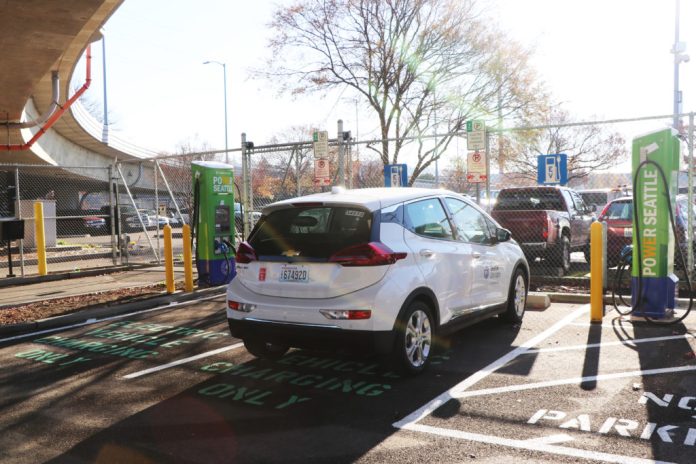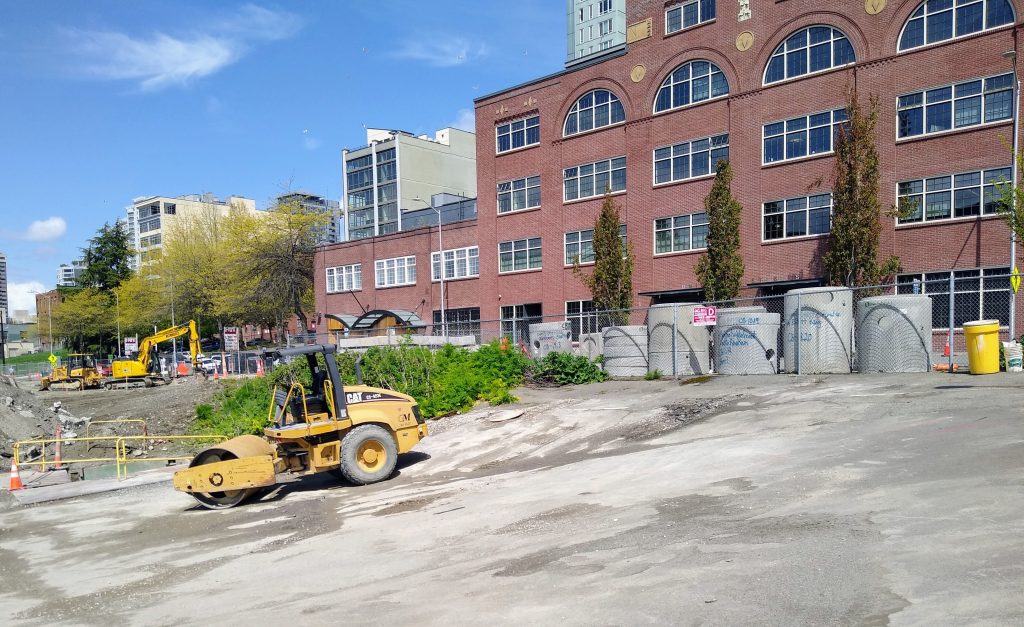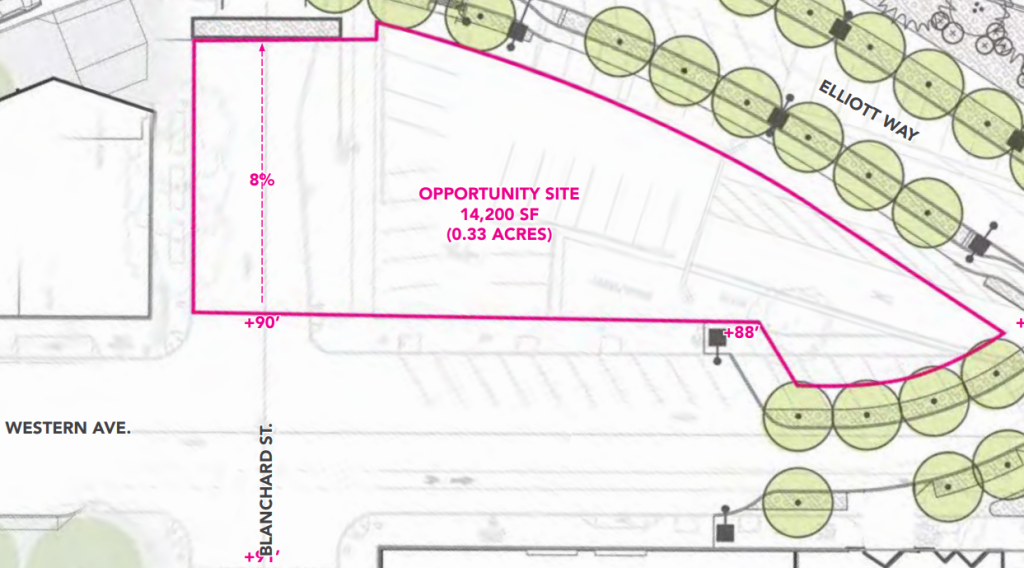
Last month The Urbanist detailed how Seattle City Light is moving forward with plans to install new surface parking lots with electric vehicle (EV) charging infrastructure at two sites that it owns, one in Belltown near Pike Place Market and one in West Seattle’s Morgan Junction. Both of the sites are located in neighborhoods with frequent transit access and where zoning laws would permit dense, mixed-use buildings. City Light is touting the benefits of making EV charging more readily accessible in these neighborhoods, while at the same time refusing to consider other uses for the properties that might benefit the residents of these neighborhoods more.
For the site in Belltown, which would be at the corner of Blanchard Street and Western Avenue adjacent to the brand new four-lane Elliott Way, City Light conducted a community survey earlier this year to solicit public opinion. With that survey now closed, The Urbanist submitted a public records request to find out what the results were. Only 56 people completed the survey City Light circulated. 44 of those 56 people said they supported the idea of an EV lot at this location, but 56 people is fewer than the total number of people who even live in just one residential building opposite the project: 2134 Western Ave alone has 145 residences.

To many, the lack of a real process around the future of this site is the latest disappointment in the overall waterfront redevelopment project, which is building Elliott Way as a freight access road through the middle of Belltown so that trucks will no longer have to wait for train crossings further north at Broad Street. Among the Waterfront critics is Steve Hall, a Belltown resident and representative of Friends of Historic Belltown, who is not excited about the City Light’s plan for the EV charging lot.

“I think it’s bad for Belltown and visitors alike,” Hall said in an email. “It is counter to the purpose of the Waterfront Project, which was sold as creating a much-needed pedestrian connection between Belltown and the Waterfront. Many people in Belltown don’t realize the massive transportation project being constructed right now through Belltown. It will result in what I call the Aurorification of the Belltown-Waterfront area.”
In 2017, the Office of the Waterfront gave a presentation to the Belltown Community Council on the overall waterfront redevelopment. Slides from that presentation reveal a discussion of a “Blanchard Opportunity Site,” which is where City Light is planning this surface parking lot. It’s hard to imagine a community visioning process in Belltown would lead to a strong desire to turn this parcel into a space to charge personal vehicles. But that’s the only choice being presented here now.

That Blanchard Opportunity Site, along with the Battery Street Portal property, now moving forward not as a park but as a downtown school, were billed as some of the biggest gains for the Belltown neighborhood coming from the overall waterfront project. Another major benefit of the $5 billion plan to bury SR 99, tear down the highway viaduct, and remake the waterfront was better walking, rolling, biking routes through the area, but that is also in doubt due a dangerous design for the bike facility.
“Pedestrian and cycling/scootering traffic is very high in this area already… and is already cramped in several places,” Hall said. “The recent cruise ship departures have been accompanied by heavy pedestrian traffic along Western Avenue, and it will soon be even more important for walkers and rollers to have space to move. Instead, they want to install a in-and-out car charging station, greatly increasing the risks to pedestrians.”

Maggi, a nearby Belltown resident, also saw the EV charging lot as another disappointment coming along with the waterfront redevelopment project, which has been a headache for Belltown residents while the Battery Street tunnel has been decommissioned and the Alaskan Way Viaduct ramps removed.
“We were promised a park-like boulevard that would stretch from Bell Street down to the waterfront,” they told me. “It’s not what was promised. It’s disappointing in a lot of ways.” Of the EV lot specifically, they told me that “this feels like more of the bait-and-switch” that happened with the waterfront park project.
City Light’s media relations manager Jenn Strang portrayed the EV lot project as pretty much baked.
“At this time, we don’t have plans for additional outreach,” Strang said. “To date, City Light has sent a mailer sent to over 1,600 nearby addresses and posted the survey to Nextdoor and Twitter. The project was also discussed with the Belltown United stakeholder group during their regular December meeting.”
Despite that push, only 56 people responded to the survey. When the Seattle Department of Transportation (SDOT) was conducting outreach on its plan to install a safe bike route in Beacon Hill (already included in outreach on the citywide Bicycle Master Plan), the department heard from more than 500 people and still spent an additional year conducting outreach, doing interviews, and holding events. The difference here is striking. So far, there are no signs that City Light is having second thoughts about advancing the project.
“There are no changes to report at this time,” Strang said. “The site is still in the design stage and is currently estimated to be completed and operational Q2 2023.”
Apart from the direct impacts of these projects, there’s also the worrying precedent that Seattle’s public utility thinks that creating new surface parking lots is in line with the city’s vision for reducing vehicle miles traveled and improving the ability of Seattle residents to not need personal cars. We can only hope that city leadership intervenes to steer Seattle toward meeting its environmental goals and making best use of its publicly owned land.
Ryan Packer has been writing for The Urbanist since 2015, and currently reports full-time as Contributing Editor. Their beats are transportation, land use, public space, traffic safety, and obscure community meetings. Packer has also reported for other regional outlets including BikePortland, Seattle Met, and PubliCola. They live in the Capitol Hill neighborhood of Seattle.

